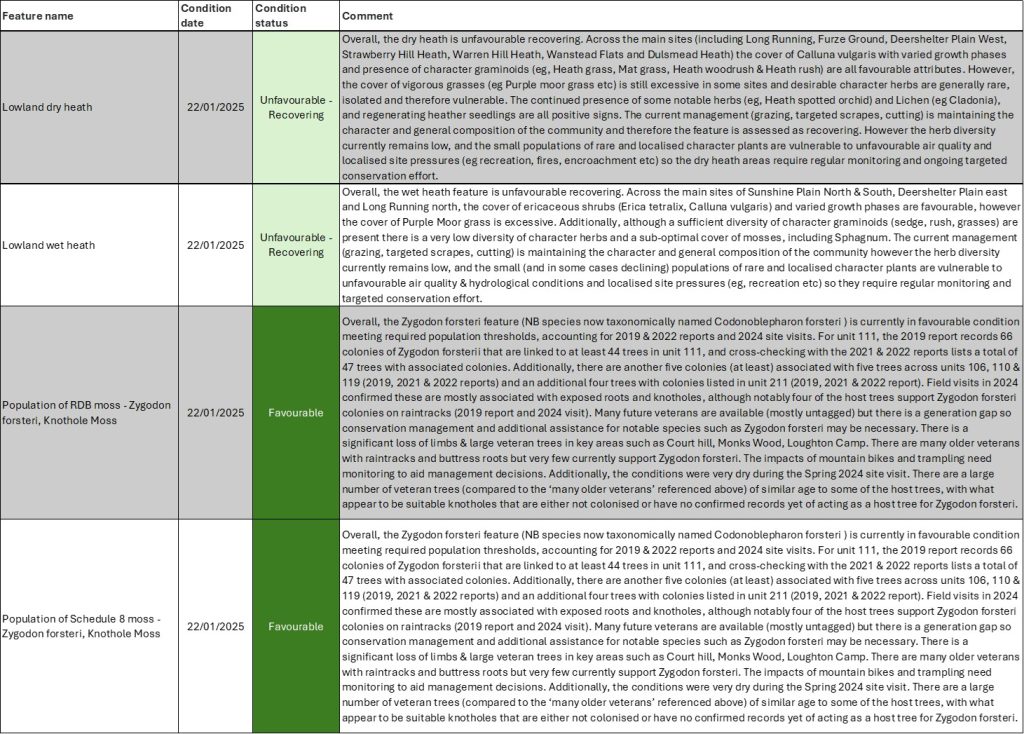Natural England was established by an Act of Parliament in 2006. They are a non-departmental public body in the UK sponsored by the Department for Environment, Food and Rural Affairs (DEFRA). It is responsible for ensuring that England’s natural environment, including its land, flora and fauna, freshwater and marine environments, geology and soils, are protected and improved. It also has a responsibility to help people enjoy, understand and access the natural environment.
Legally, Natural England’s powers include defining ancient woodlands, awarding grants, designating Areas of Outstanding Natural Beauty and Sites of Special Scientific Interest, managing certain national nature reserves, overseeing access to open country and other recreation rights, and enforcing the associated regulations. It is also responsible for the administration of numerous grant schemes and frameworks that finance the development and conservation of the natural environment, for example environmental stewardship, the Countryside Stewardship Scheme, environmentally sensitive areas, and the Access to Nature Scheme.
4,270 acres (72%) of Epping Forest’s 5,900 acres is categorised by Natural England as a Site of Special Scientific Interest (SSSI) and therefore, it has a duty to regularly monitor the condition of the characteristics which make it so rare. You can read the full citation below:
Historically, Natural England has split Epping Forest into 41 parcels of land (known as “units”) for condition assessments to be completed by their expert staff or by independent contractors. This is usually done through site visits every 6-10 years.
According to Natural England’s data, 9 units is in favourable condition (21% of total volume of units), 23 units is unfavourable, but recovering (55%), 8 units is unfavourable with no change since the previous assessment (19%) and 1 unit is unfavourable and declining since the last assessment. In terms of land mass, 26% is favourable, 58% is unfavourable recovering, 15% is unfavourable no change and 2% is unfavourable declining.
Following the Covid-19 pandemic, Natural England switched its approach to audits from unit based assessments to feature assessments across the entire SSSI footprint. For some features, this will not change the approach undertaken to date (stag beetles, assemblages of dragonfly, breeding birds etc), but for other features, such as woodland community types, there is a challenge involved with the extent and number of units that need to be visited to make a single feature assessment.
Natural England have a requirement to update the SSSI feature condition information by January 2028 to report to government as part of their Environmental Improvement Plan.
So, what does this mean for Epping Forest? Well, instead of having an assessment on 41 units every 6-10 years, we will have an assessment on 12 features every 4 years. The features are identified as:
1. Semi-natural habitat mosaic
2. Broadleaved woodland/ wood pasture types including veteran trees
3. Lowland heathland – wet & dry
4. Grassland including acid & neutral grasslands
5. Breeding bird assemblage of woodland habitats
6. Amphibian assemblage
7. Invertebrate assemblages – woodland, scrub/scrub edge, grassland & heathland mosaics, wetlands
8. Dragonfly assemblage
9. Stag beetle
10. Bryophyte assemblage
11. Knothole moss
12. Fungi assemblage

Natural England have now agreed the features assessment timeline, for the next 4 years, as above. Year 1 has focused on lowland wet and dry heath, which sadly has seen no improvement in condition – it remains ‘unfavourable recovering’. However, the knothole moss features assessment has been recategorized from ‘unfavourable recovering’ to ‘favourable’! The detailed feedback from Natural England is as listed below:

Below is an overview provided by the Head of Conservation at Epping Forest to the local Wren Conservation Group’s AGM on the work her team are doing to continue to drive improvements in Epping Forest’s SSSI features:
You can also read the full presentation made by Natural England to the Epping Forest and Commons Committee in January 2024 below:
